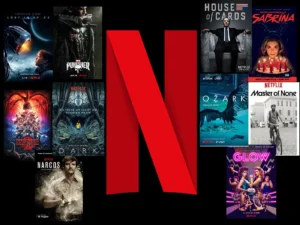Netflix Earnings Beat Expectations, But Stock Dips as Growth Questions Loom
Netflix (NFLX) has long been the dominant force in streaming, consistently outpacing competitors in revenue, profit, and global reach. But even the leader isn’t immune to market expectations—and the weight of a half-trillion-dollar valuation.
The company’s second-quarter earnings report, released Thursday, painted a picture of continued strength. Revenue and operating margins both grew from the prior quarter, and Netflix raised its full-year guidance. The company is now on track to generate $13.5 billion in operating income in 2025, nearly ten times what Disney is expected to earn from its entertainment-streaming operations.
Yet the market response was tepid at best: Netflix shares fell more than 5% on Friday following the announcement. Why the selloff after what looks like another solid quarter?
A Great Business, But a Pricey Stock
Netflix’s fundamentals are undeniably strong. It boasts more than 300 million paying subscribers, expanding profitability, and a dominant market share in the global streaming industry. However, investor expectations have already factored in nearly perfect performance.
At a valuation of nearly 44 times projected earnings, the bar is sky-high. Over the past six months alone, shares surged nearly 50%, giving Netflix a market capitalization north of $540 billion—more than double Disney’s. Even solid earnings may not be enough to sustain that pace.
The company has internally set ambitious targets to double its revenue and reach a $1 trillion market cap by 2030. That’s a bold vision, and one that requires new engines of growth beyond subscriber gains.
Advertising: The Growth Frontier
One area where Netflix is investing heavily is in advertising. In the Q2 report, management reaffirmed its goal to double the size of its ad business in 2025. However, even with aggressive growth, ad revenue is expected to reach only $3.9 billion this year, representing less than 9% of the total expected revenue.
That puts Netflix far behind digital ad giants like YouTube, which generates nearly $37 billion in ad revenue annually and consistently outperforms Netflix in U.S. TV viewing share, according to Nielsen.
Engagement Worries and Competitive Pressures
While Netflix remains the global leader in subscription streaming, signs of stalled engagement have begun to emerge. Guggenheim analyst Michael Morris estimated that Netflix viewership declined 1.5% in June and 2.5% in May, raising questions about whether the platform is still gaining attention in proportion to its growing value.
Analysts are also pointing to a need for evolution. Citigroup’s Jason Bazinet suggested Netflix should open its platform to content creators, following the path of YouTube and TikTok. That would be a massive strategic pivot, but one that could unlock new monetization and engagement opportunities beyond traditional long-form entertainment.
The Bottom Line
Netflix is doing better than fine—it’s thriving. But with a sky-high valuation and ambitious long-term targets, even strong quarters like this one won’t guarantee stock gains. The company must now prove it can grow beyond the subscription model, succeed in advertising, and hold viewers’ attention in an increasingly fragmented content landscape.
If Netflix wants to be a $1 trillion company, it may need to think—and act—more like a platform than a network.
What do you think? Is Netflix still a buy at these levels? Or has the stock run ahead of reality? Share your thoughts in the comments.

